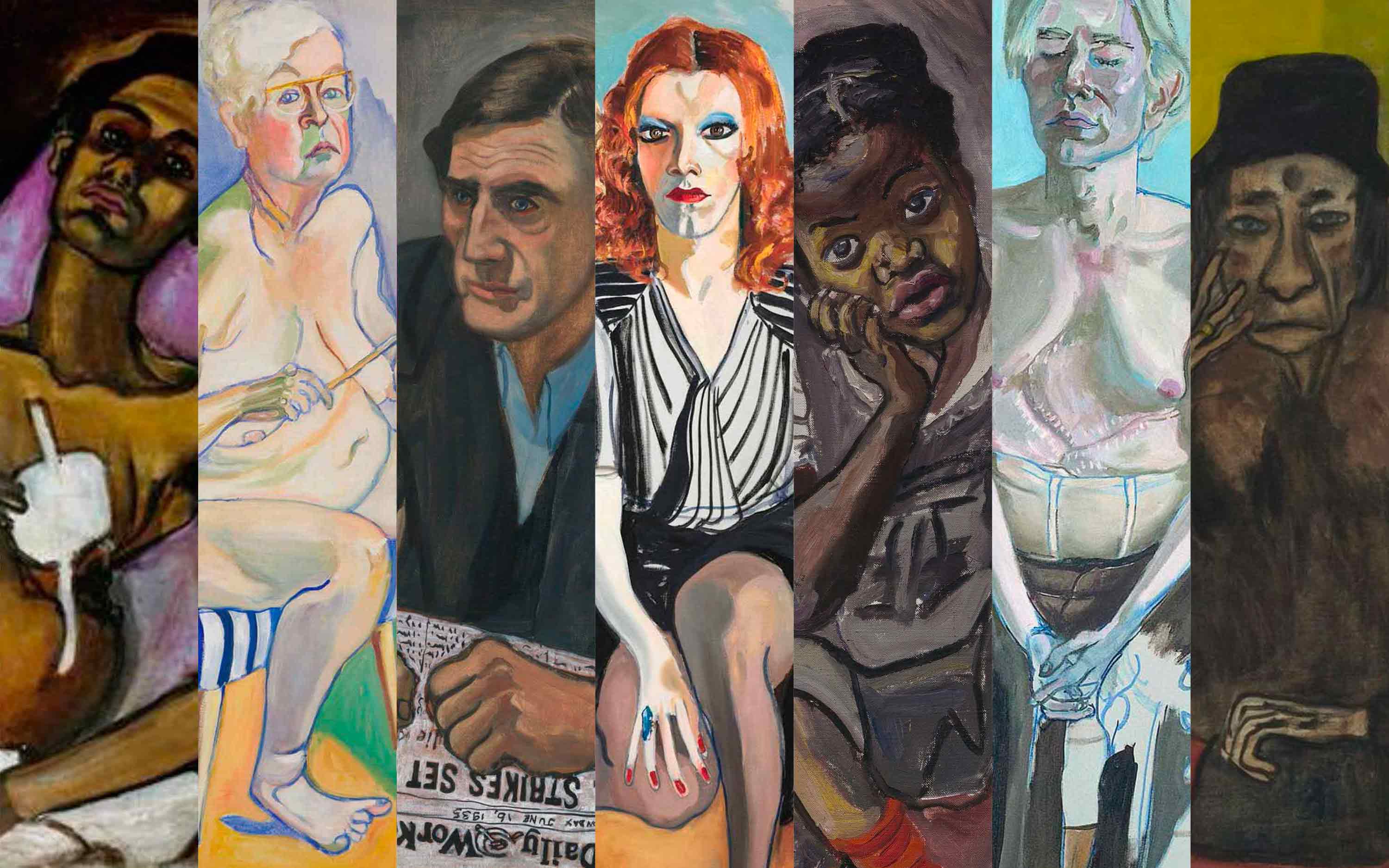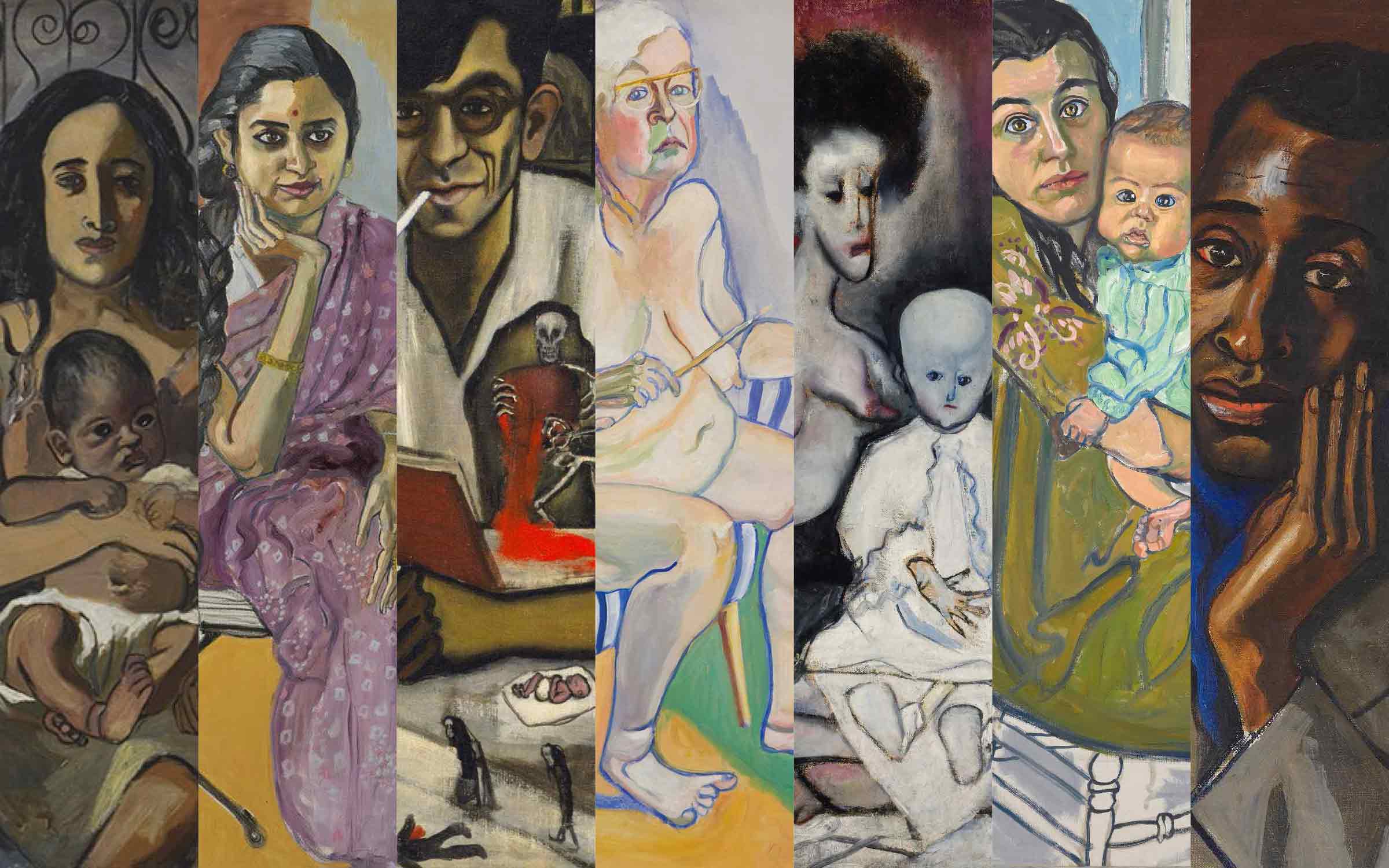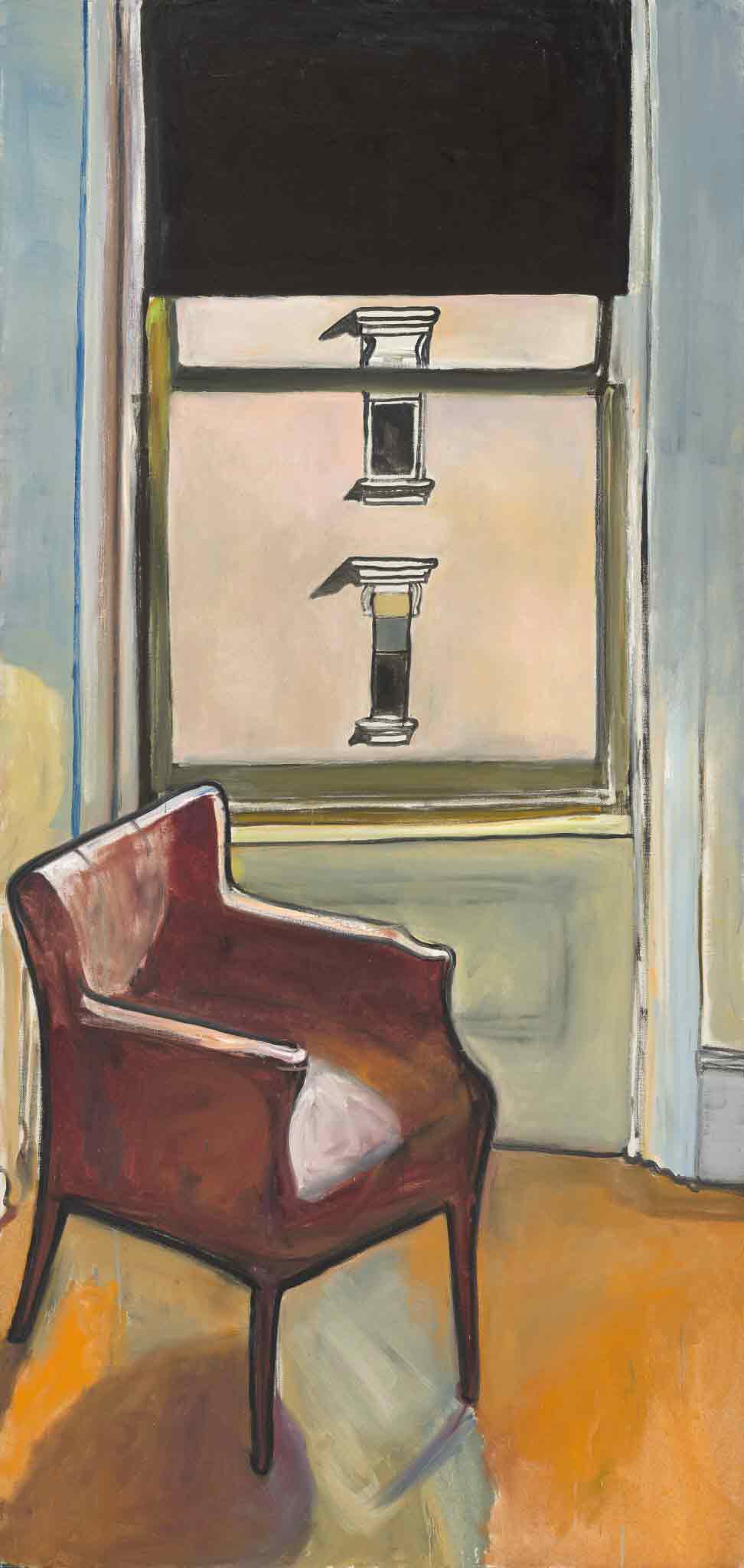

About intro
About Alice Neel
Neel was one of the great American painters of the twentieth century
Neel was one of the great American painters of the twentieth century
Audio
Listen to Alice Neel speak about her life and work
Intro
Artist, Humanist, Individualist
Alice Neel was one of the great American painters of the twentieth century and a pioneer among women artists. A painter of people, landscape and still life, Neel was never fashionable or in step with avant-garde movements. Sympathetic to the expressionists of Europe and Scandinavia and to the darker arts of Spanish painting, Alice Neel's style and approach was distinctively her own.
Early life
Early Life
Neel was born near Philadelphia in 1900 and trained at the Philadelphia School of Design for Women. She became a painter with a strong social conscience and equally strong left-wing beliefs. In the 1930s she lived in Greenwich Village, New York and enrolled as a member of the Works Progress Administration for which she painted urban scenes. Her 1930s portraits embraced left wing writers, artists and trade unionists.
Artisitc Development
Artistic Development
Neel left Greenwich Village for Spanish Harlem in 1938 to get away from the rarefied atmosphere of an art colony. In the 1960s she moved to the Upper West Side and made a determined effort to reintegrate with the art world. This led to a series of dynamic portraits of artists, curators and gallery owners, among them Frank O’Hara, Andy Warhol and the young Robert Smithson.
Recognition
Recognition
In the 1970s, as her fame increased, she never lost touch with what most mattered to her, the people of New York who happened to intersect with her life, be it art world figures, neighbors, or strangers. Neel was never restrained by convention, she broke barriers throughout her life, celebrating the freedom of women to express their independence and take pride in their bodies.
More
Justice
Champion of Social Justice
Neel’s entire life and work was infused with an interest in all humanity. She had a sensitivity for those who suffered from and those who fought against social discrimination. Neel was always ahead of society’s acceptance: whether the plight of labourers, the poor, women’s freedom from stereotypes, their equality of eroticism and intelligence, gender discrimination including gay rights, and racism against blacks and immigrants.
More
Later life
Later Life
Alice Neel exhibited widely in America throughout the 1970s and in 1974 she was honored with a retrospective exhibition at the Whitney Museum of American Art, New York. In the year 2000, she was again honored with a retrospective on the occasion of her centennial. She was widely recognized as one of America’s great artists, but she was still rarely noticed in Europe.
New Millennium
Retrospective
In 2010, the Museum of Fine Arts Houston organized a retrospective with Barry Walker and Jeremy Lewison that traveled to two venues in Europe: the Whitechapel in London and the Moderna Museet Malmö in Malmö, Sweden. This initial introduction was well received. In 2016 another retrospective that traveled through Europe resulted finally in her recognition as a world renowned artist of the 20th century.






About intro
About Neel
Alice Neel was one of the great American painters of the twentieth century who painted in a style and with an approach that was distinctively her own.
Alice Neel was one of the great American painters of the twentieth century who painted in a style and with an approach that was distinctively her own.
Audio
Listen to Alice Neel speak about her life and work
Intro
Artist, Humanist, Individualist
Alice Neel was one of the great American painters of the twentieth century and a pioneer among women artists. A painter of people, landscape and still life, Neel was never fashionable or in step with avant-garde movements. Sympathetic to the expressionists of Europe and Scandinavia and to the darker arts of Spanish painting, Neel's style and approach was distinctively her own.
Early life
Early Life
Born near Philadelphia in 1900, Neel trained at the Philadelphia School of Design for Women. She became a painter with a strong social conscience and equally strong left-wing beliefs. In the 1930s she lived in Greenwich Village and enrolled as a member of the Works Progress Administration, painting urban scenes. Her 1930s portraits embraced left wing writers, artists and trade unionists.
Artisitc Development
Artistic Development
Neel left Greenwich Village for Spanish Harlem in 1938 to get away from the rarefied atmosphere of an art colony. In the 1960s she moved to the Upper West Side and made a determined effort to reintegrate with the art world. This led to a series of dynamic portraits of artists, curators and gallery owners, among them Frank O’Hara, Andy Warhol and the young Robert Smithson.
Recognition
Recognition
In the 1970s, as her fame increased, she never lost touch with what most mattered to her, the people of New York who happened to intersect with her life, be it art world figures, neighbors, or strangers. Never restrained by convention, she broke barriers her whole life, celebrating the freedom of women to express their independence and take pride in their bodies.
More
Justice
Champion of Social Justice
Neel’s entire life and work was infused with an interest in all humanity. She had a sensitivity for those who suffered from and those who fought against social discrimination. Neel was always ahead of society’s acceptance: whether the plight of lthe poor, women’s freedom from stereotypes, their equality of eroticism and intelligence, gay rights, gender discrimination, and all forms of racism.
More
Later life
Later Life
Neel exhibited widely in America throughout the 1970s and in 1974 she was honored with a retrospective exhibition at the Whitney Museum of American Art, New York. In the year 2000, she was again honored with a retrospective on the occasion of her centennial. She was widely recognized as one of America’s great artists, but she was rarely noticed in Europe.
New Millennium
Retrospective
In 2010, the Museum of Fine Arts Houston organized a retrospective with Barry Walker and Jeremy Lewison that traveled to two venues in Europe: the Whitechapel in London and the Moderna Museet Malmö in Sweden. This introduction was well received. In 2016 another retrospective that traveled through Europe resulted finally in her recognition as a world renowned artist of the 20th century.




About Neel
Drop Arrow



